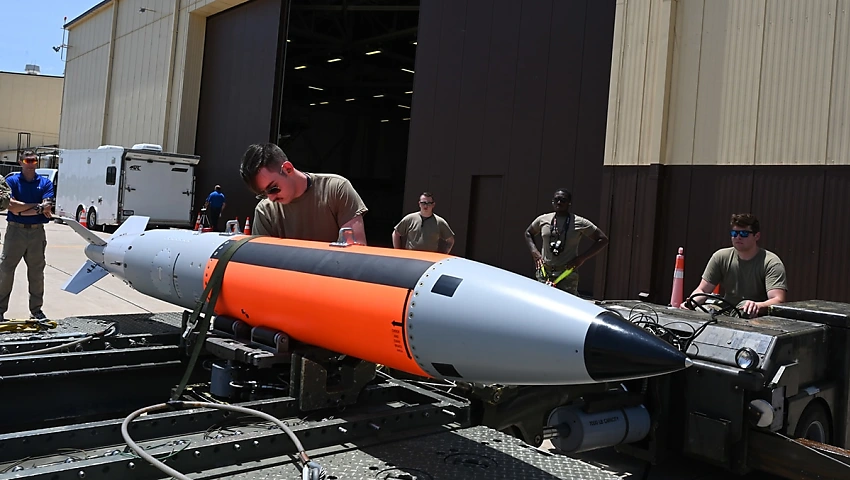
Upgraded version of the B61 nuclear gravity bomb
Picture: The 72nd TES conducts testing and evaluation of new equipment, software and weapons systems for the B-2 Spirit Stealth Bomber. Photo: US Air Force/Airman 1st Class Devan Halstead.
The United States has sanctioned the development of an upgraded version of the B61 nuclear gravity bomb in response to the evolving security landscape, as confirmed by the US Department of Defence.
The newly proposed B61-13 aircraft munition will be manufactured under the purview of the Department of Energy’s National Nuclear Security Administration, subject to approval and funding from Congress. This gravity bomb variant is designed to be deployable by contemporary aircraft, reinforcing the deterrence capabilities against potential adversaries and bolstering the confidence of allied nations. It is intended for use against more resilient and larger military targets, serving as a replacement for the existing B61-7 munitions with a similar yield.
Assistant Secretary of Defence for Space Policy, John Plumb, expressed that “Today’s announcement is reflective of a changing security environment and growing threats from potential adversaries. The United States has a responsibility to continue to assess and field the capabilities we need to credibly deter and, if necessary, respond to strategic attacks, and assure our allies. The B61-13 represents a reasonable step to manage the challenges of a highly dynamic security environment. While it provides us with additional flexibility, production of the B61-13 will not increase the overall number of weapons in our nuclear stockpile.”
Both the B61-7 gravity bomb and the new B61-13 are reported to possess a yield of approximately 360 kilotons, while the B61-12 munitions are believed to have a yield of 50 kilotons. The decision to pursue this development comes after an extensive period of review, continuous evaluation, and careful consideration and is not a response to any particular current event, according to Mr. Plumb.
The B61-13 will make use of the existing production capabilities that support the B61-12 and will incorporate modern safety, security, and precision features similar to those found in the B61-12.
The impetus for this munition stems from a complex security environment in which US competitors are expanding, diversifying, and modernizing their nuclear capabilities while relying more on nuclear weapons, as outlined in the 2022 Nuclear Posture Review.
It’s worth noting that the introduction of the B61-13 will not result in an overall increase in the number of weapons in the US stockpile, as the production of B61-12s will be adjusted accordingly to maintain the same total number of weapons.
The US Department of Defence clarified that “Deterrence and assurance are enhanced if the United States can continue to deny an adversary sanctuary from attack. The B61-13 will provide the president with additional options against certain harder and larger military targets, even while the department works to retire legacy systems such as the B83-1 and the B61-7.”




